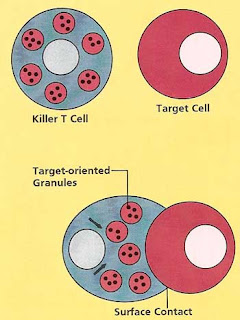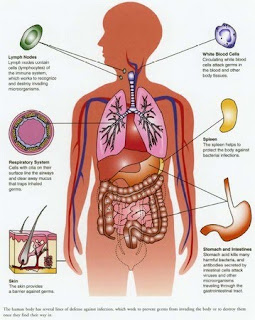If microbes get past your first line of defence, it is up to the second line of defence, your immune system, to keep you from getting sick. It is made up of lots of different cells that are always patrolling your body and fighting any bad microbes they find :
- Phagocytes - cells which "eat" foreign material to destroy them :
- Nutrinophils - phagocytize bacteria
- Eosinophyls - secrete enzymes to kill parasitic worms
- Basophils - secrete histamine to enhance inflammation
- Macrophages - "big eaters" phagocytize just about anything
These highly specialized white blood cells surround, engulf and destroy antigens that could compromise your body’s health.
Your body is exposed to many different types of microbes everyday, so your immune system is always hard at work, keeping you healthy!

image's source : The Immune System : (http://www.uic.edu/classes/bios/bios100/summer2002/lect18.htm)





